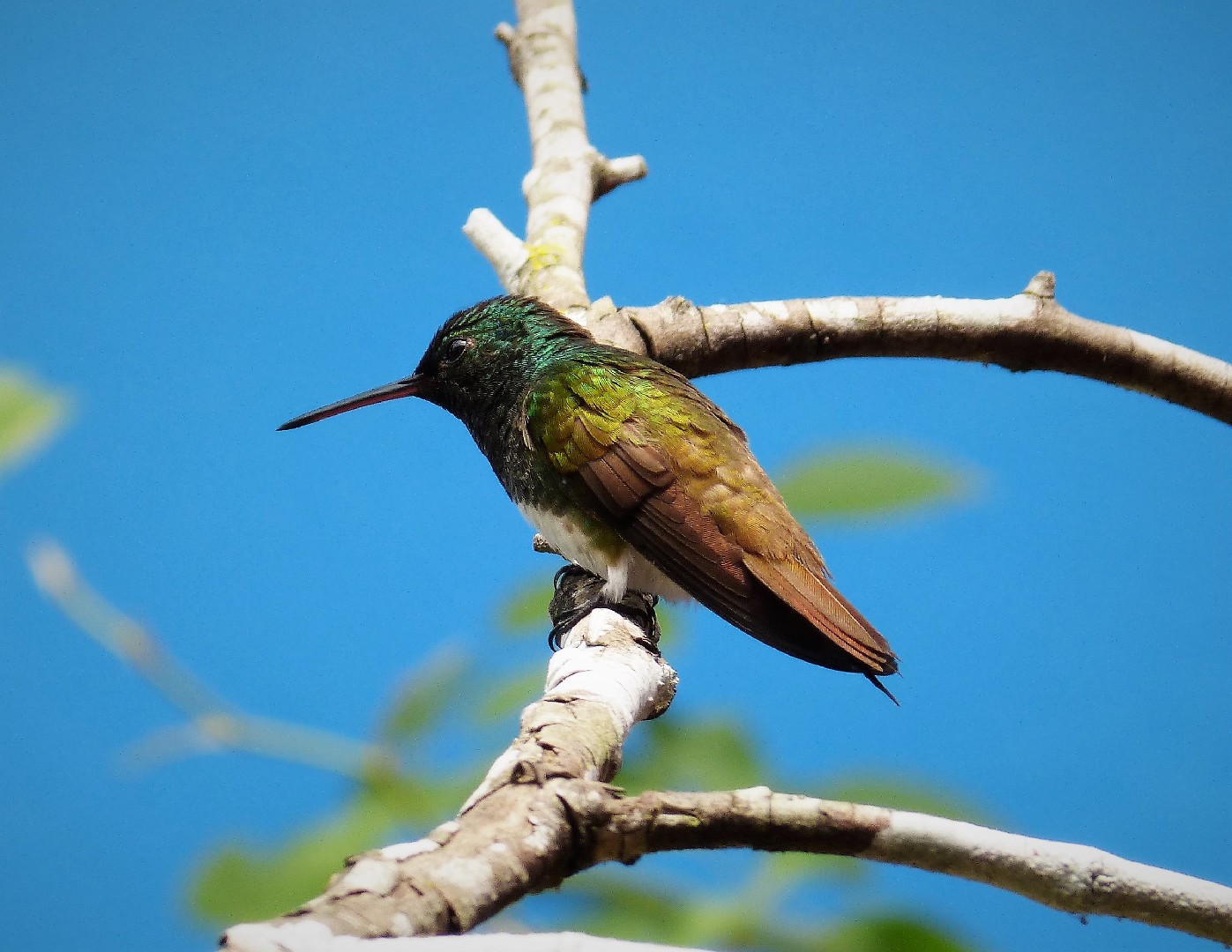Garden Emerald
A species of Typical emeralds Scientific name : Chlorostilbon assimilis Genus : Typical emeralds
Garden Emerald, A species of Typical emeralds
Botanical name: Chlorostilbon assimilis
Genus: Typical emeralds
Content
Description General Info
Description
The garden emerald (Chlorostilbon assimilis) is a small hummingbird that is an endemic resident breeder in Costa Rica and western Panama. It was formerly considered to be a subspecies of the blue-tailed emerald. This is a species of open habitats, including bushy savanna, clearings, cultivation, and gardens. It can be found in the Pacific lowlands and hills, locally up to an elevation of 1500 m. The nest is a neat cup of plant fibres decorated on the outside with bark fragments. The two white eggs are incubated by the female alone. The garden emerald is 8 cm long and weighs 2.6 g. The male has bronze-green upper parts, brilliant green under parts, white thighs and a deeply forked tail. The female has grey underparts, a white stripe behind the eye and dusky ear patches. She has white tips to her tail, which lacks the deep fork of the male. Young birds resemble the adult female, but have some buff feather tips. The garden emerald has a dry chit call, and the males song is a thin tsippy tsee tsee. Breeding males perch on open branches and may give a dive display. These birds visit small flowers, including those ignored by other species, and will also take tiny insects. They are frequently chased off by larger hummingbirds. 
Size
8 - 9 cm
Nest Placement
Tree
Feeding Habits
Garden Emerald predominantly feeds on nectar from a variety of flowers, including shrubs, trees, and ornamental hedges. They forage in towns and on flowering coffee plants. Additionally, garden Emerald consumes insects, showcasing a mixed diet that adapts to its habitat.
Habitat
Garden Emerald primarily dwells in the verdant peripheries of woodlands and meandering hedgerows adjacent to open fields. This species thrives in an array of semi-open landscapes, including streamside thickets, scrubby zones, and cultivated gardens. Though garden Emerald favors domesticated and wild spaces alike, its preference for coastal lowlands and hilly terrains is pronounced, ranging upwards in elevation to the foothills, making it a versatile inhabitant within these broadly defined natural and semi-natural areas.
Dite type
Nectivorous
General Info
Feeding Habits
Bird food type
Scientific Classification
Phylum
Chordates Class
Birds Order
Swifts and hummingbirds Family
Hummingbirds Genus
Typical emeralds Species
Garden Emerald 